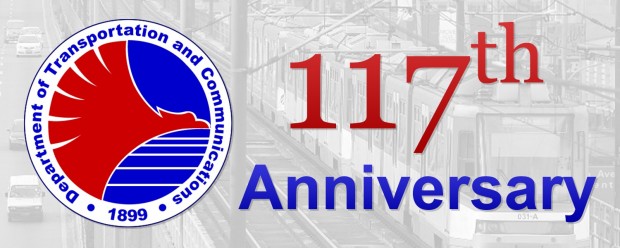Home > Blog > Environment
Green Traveling

As the Department of Transportation and Communication (DOTC) celebrates its 117th anniversary today, we also take a quick look back in history when it was first established in 1899. Its roots can be traced back to the first Council of Government of the First Philippine Republic, wherein Gracio Gonzaga was appointed as Secretary of Public Welfare, which included transportation and communications services. Through the years, the department has undergone changes in names and scope of responsibilities, until it finally settled into the name of DOTC under the Arroyo regime in 2004.
The DOTC is responsible for the development and provision of efficient, effective and secure infrastructure in the transportation and communications sectors. One of their more recent projects is the test run of double-decker buses that offer point-to-point routes, including Trinoma to Glorietta 5, SM North EDSA to Glorietta 5 and SM Megamall to Glorietta 5. Equipped with free Wi-Fi, CCTV , VIP lounge with refrigerator, restroom and a karaoke machine to help ease the burden of traffic, the service will be operational until January 31.

Transportation as Hazards to Nature
Because transportation has become an important discussion in the light of urban traffic, we also bring forth another aspect of travel that brings repercussions to the environment. These are the Greenhouse Gases (GHG) that come from burning fossil fuels that trigger air pollution, and ultimately, global warming.
To help ease this problem, a new wave of transportation inventions is hitting the road, showing a greener and more sustainable way of traveling.
E-Jeepneys

The very first E-jeepney in Southeast Asia was seen in Ayala Avenue, Makati City on July 1, 2008. Since then, eight units of e-jeepneys have been roaming two routes in the business district–the Salcedo and Legaspi routes that start and end at the Landmark Mall. Quezon City also boasts of its own operating e-jeepneys named COMET with routes from SM North EDSA to the LRT Katipunan Terminal and vice versa.

E-jeepneys are also found in Puerto Princesa, where biodegradable household wastes are converted into electricity.
E-Trikes
Former Puerto Princesa Mayor Ed Hagedorn started this project in May 2009. The e-trikes serve as a taxis to and from the city’s international airport.


With speed that can reach up to 60 kilometers per hour, the electric tricycles in Taguig City were first introduced in late 2008. These vehicles aim, not only to help Mother Nature, but also tricycle drivers suffering from oil price hikes.
Bamboo Taxi

Powered by coconut biodiesel and of 90% bamboo materials, bamboo taxis can be found in Tabonton, Leyte.


